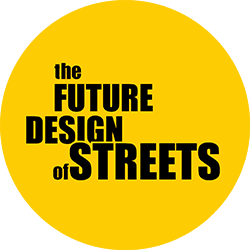PLANTS & SOIL
The underground is as well public space. Not only the building, not only the pavement, but also the subsurface.
Joyce van den Berg
It is important to intensify the relationship between the characteristics of the soil and the plant cover proposed on the street. Two components that reinforce the idea that the street is a multi-species space. This is about natural and transformed materials, mineral or vegetable materials, comfort levels, waterproofing.
The attention given to soil and vegetation allows the establishment of important relationships between public space and the natural territories that are beyond the limits of urban space. Vegetal elements, if planted in the right manner, do not need too much maintenance.
Integrating them with the rain water system also creates water reserves. It is essential to ensure enough space for trees, not only in the last phases of a design project, but as a basic requirement at every design and planning level.
The green structure of a street is also defined by the quality of its underground – the basis – its soil. Specially, on narrow and smaller streets the underground space is limited. Besides having soil space for trees and plants, it also the space for: water supply system, rain water system, sewerage system, cables and wires of all kinds.
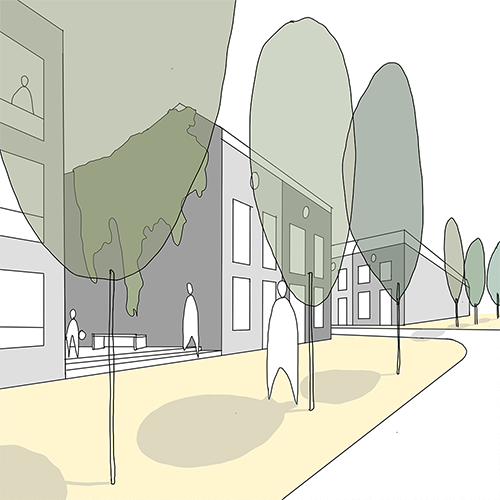
STREET TREES
Trees give streets a green character, provide shade on pedestrian areas, offer a cooling effect and form a basis for urban ecology.
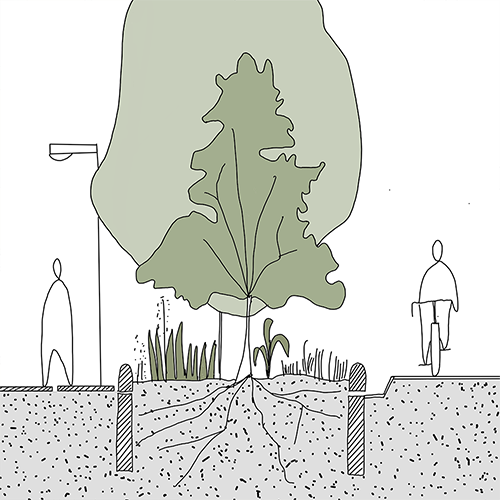
VEGETATION
The transformation of streets means reorganising the available (limited) space for all kinds of needs and demands. Streets should be understood as spaces of (urban) nature with space for. vegetated and permeable areas – pavements and soils – are fundamental.
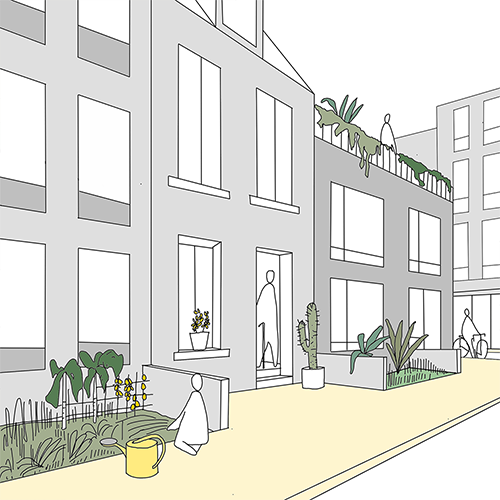
FRONT GARDENS
Well-kept front gardens make streets greener. These front gardens can vary in organisation, plant types, dimensions, and other objects. They form hybrid spaces between private spaces and the public space. The routines that citizens develop in these spaces can have a demonstrative and exemplary effect, they enhance interaction processes, ensure presence and control.
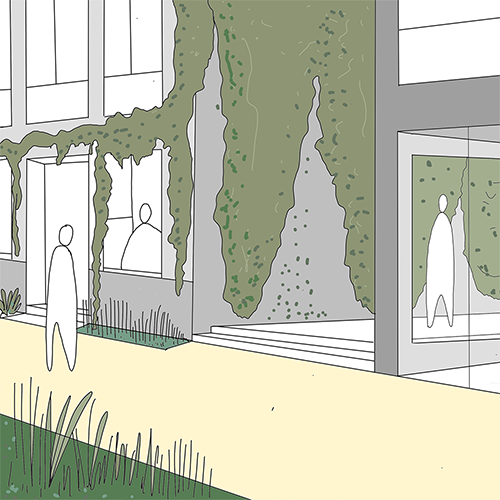
GREEN FACADES
Vertical facades, plants / pocket gardens contribute to a greener character of streets. In smaller streets it can be a way to introduce gardening into these spaces. They enhance maintenance processes and are a positive response to the need for shading, temperature, humidity, and noise control.
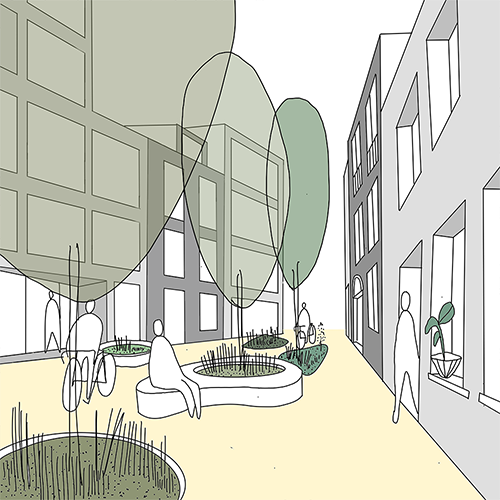
POCKET GARDENS
Streets with a local character can also be seen as local pocket gardens. There are many examples to combine urban green with park elements, playgrounds or sport spaces. Greener spaces provide more areas for water permeability and water retaining.
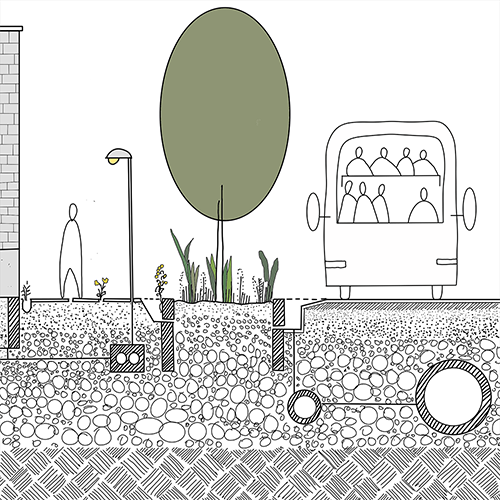
UNDERGROUND
Green urban ecology starts with a good base: a solid and healthy soil and air quality, with sufficient space and water supply. Designing the underground is part of street design, at a project phase and for a longer period (maintenance planning). It is important that all needed green systems, urban networks and mobility demands are planned in an integral manner.
